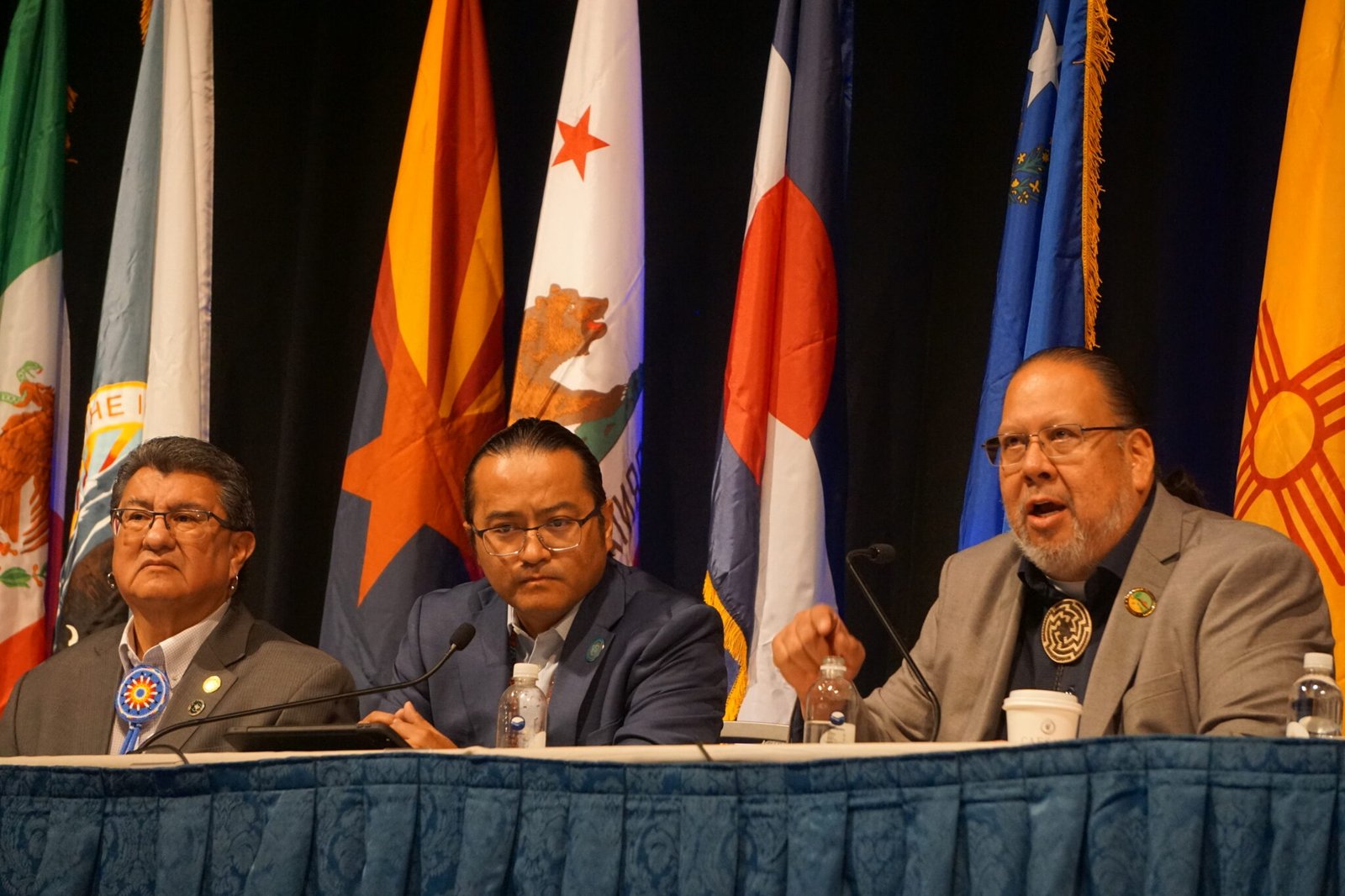Buu Nygren
Tribes Propel Lake Mead’s Water Supply Amid Last-Ditch Push for $5B Federal Water Legislation

In a significant development for the Colorado River Basin, tribes have been bolstering the water supply in Lake Mead through voluntary agreements since 2021. These collaborative efforts are vital, as Lake Mead serves as a critical reservoir for 25 million people.
The prolonged drought in the region has shifted the dynamics of water management negotiations, granting tribes greater leverage. The federal government has responded by financially incentivizing tribes to conserve water and invest in infrastructure improvements.
During the recent Colorado River Water Users Association conference, new agreements were reached, anticipated to conserve an additional 43,000 acre-feet of water in Lake Mead. This volume equates to enough water for approximately 14,000 households for a year. The San Carlos Apache Tribe will leave 30,000 acre-feet in the reservoir in exchange for $12 million, while the Fort Yuma Quechan Indian Tribe will conserve 13,000 acre-feet for $5.2 million.
These recent agreements continue a trend of historic water conservation efforts with tribes in the region, aimed at stabilizing water levels in Lake Mead. Last year, the Gila River Indian Community received $50 million from the Inflation Reduction Act by committing to conserve 125,000 acre-feet of water, adding about two feet to the reservoir’s levels. They plan to sustain similar conservation efforts this year and in 2025, potentially providing enough water for half a million homes.
In a further commitment to infrastructure improvement, the Gila River Indian Community received $107 million for three water conservation projects, promising to conserve an additional 73,000 acre-feet of water over the next decade. Concurrently, the Bureau of Reclamation announced a $5 million study with the Colorado River Indian Tribes to explore a new reservoir that could save 35,000 acre-feet of water for the tribe.
Funding from the Inflation Reduction Act has also been directed toward the White Mountain Apache Tribe, which secured $21.5 million for rural water delivery system planning and design. The Biden administration has allocated over $6 billion to support tribal water infrastructure, though future funding may hinge on President-elect Donald Trump’s intentions regarding unspent funds.
Amid these developments, tribal chiefs are urging Congress to pass comprehensive federal water legislation before the new Congress is seated. The Northeastern Arizona Indian Water Rights Settlement Act proposes $5 billion for essential projects and guarantees access to over 56,000 acre-feet of Colorado River water for the Navajo Nation, Hopi Tribe, and San Juan Southern Paiute Tribe.
Navajo Nation President Buu Nygren highlighted the urgency of this settlement, despite rising concerns from some basin states about its impact on water management. Negotiations remain complex, as Upper Basin states are wary of the implications of inter-basin water leasing.
As the deadline nears, tribal leaders note that significant water legislation has historically passed during lame duck congressional sessions. Nygren expressed hope that a consensus could still be reached among basin states to facilitate the passage of the bill.
Support for the settlement continues to grow, with tribal leaders working to convince Congress to approve the bill in the coming weeks. If successful, it would mark a pivotal moment for tribal water rights and management in the region.


















